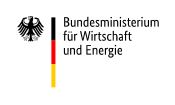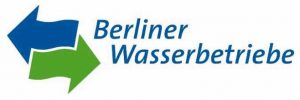In recent times, rising sulphate concentrations in groundwaters and bank filtrates are challenging many water utilities in terms of drinking water supply. In certain regions, it has become increasingly difficult to meet the threshold concentration for sulphate (250 mg/L according to the Drinking Water Ordinance) without additional technical measures. Against this background, the SULEMAN project will examine commercial sulphate removal methods under real operating conditions in terms of their resource and energy efficiency at local sites of HAMBURG WASSER and Berliner Wasserbetriebe.
In Hamburg elevated sulphate levels are due to the use of deep groundwaters which in parts are in contact with salt mines and therefore accumulate sulphate. Berlin’s drinking water, which is mainly generated by bank filtration, is impacted by increased sulphate levels of the River Spree. After the closing of the lignite mining in the Lusatia region southeast of Berlin, the former open mining pits were flooded and as a result, large quantities of sulphate are released into the upper reaches of the River Spree and are transported to Berlin.
In fact, in both metropolises it is becoming increasingly difficult to meet the threshold concentration for sulphate (250 mg/L according to the Drinking Water Ordinance) without implementing additional technical measures. Technical sulphate removal methods are available already, e.g. low pressure reverse osmosis (LPRO) membranes. Sulphate can also be removed by ion exchangers allowing for the sulphate ions being bonded to the ion exchange material and other ions with equal charge being released into the water.
The aim of the SULEMAN project is to obtain comparative statements on the resource efficiency of the mentioned methods during the operation of test facilities at the Hamburg and Berlin sites. As an alternative to these technologies, an innovative method with capillary LbL-modified ultrafiltration membranes (LbL-UF) is being developed, investigated and optimised.
KWB will perform life cycle assessments to determine the sustainability of the conventional technologies as well as of the innovative capillary membrane. The assessments consider upstream and downstream treatment methods, specific energy and chemical requirements, residues management as well as the evaluation of energy consumption and associated greenhouse gas emissions.
The SULEMAN project is a cooperation between the water utilities Hamburg Wasser (HW) and Berliner Wasserbetriebe (BWB), the DVGW Research Centre at the Hamburg University of Technology (TUHH), Kompetenzzentrum Wasser Berlin as well as the technopreneurs Inge GmbH and Surflay Nanotec GmbH.
© header photo: Wolf Raber, Insel der Jugend Berlin



- Effiziente Trinkwasseraufbereitung bei steigenden Sulfatbelastungen
- Effiziente Trinkwasseraufbereitung bei steigenden Sulfatbelastungen — 55. Essener Tagung für Wasserwirtschaft
- Pilotierung von Verfahrensoptionen für die Sulfatentfernung bei der Trinkwasseraufbereitung: Niederdruckumkehrosmose mit Wickel- bzw. Hohlfasermodulen und Ionenaustausch
- SULEMAN - Aufbereitung von Grundwässern mit erhöhtem Sulfatgehalt: Innovative Optionen und Grenzen eines ressourcen- und insbesondere energieeffizienten Trinkwassermanagements : gemeinsamer Abschlussbericht der Verbundprojektpartner (Förderkennzeichen BMWK 03ET1574 A bis F)
- Vergleich von Verfahren zur Sulfatentfernung bei der Trinkwasseraufbereitung anhand einer Berliner Fallstudie



